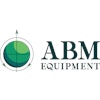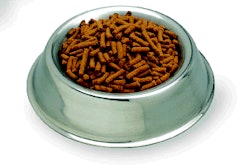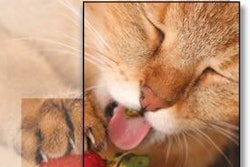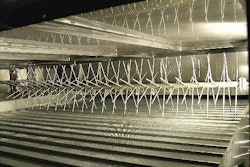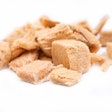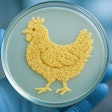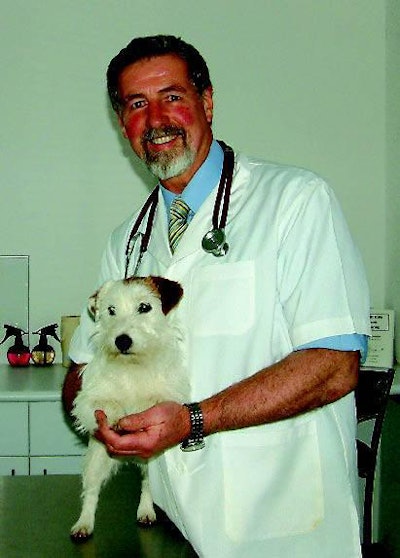
I clearly recall Dr. Ian Billinghurst speaking at Petfood Forum 2003. He gave a thought-provoking lecture, earnestly facing a highly skeptical audience. At the time, I think what he said seemed rather far out to most of his audience, including me. Four years later, his message seems to be working its way into the mainstream. Demand for raw petfoods is steadily increasing, and Packaged Facts market research is calling raw petfood "the next big thing."
Billinghurst is a veterinary surgeon in general practice in Australia. He believes that, because of the dictates of evolution, "grain-based diets are unsuitable for dogs and cats."
I recently had the chance to talk with him about his RAW business and beliefs. His company, BARF Australia, manufactures raw petfoods and distributes them in the Australian and Japanese markets under the trademark Dr. B's Genuine Aussie RAW. In addition to its common meaning, RAW stands for "restoring animal wellness." BARF stands for "bones and raw food" or "biologically appropriate raw food."
The evidence
"The hypothesis behind BARF," says Billinghurst, "is that the diet a dog or cat evolved to eat is the best way to feed it." This is the hypothesis accepted by most modern zoos, notes Billinghurst.
He explains that "evolutionary biology holds if properly formulated raw foods are fed to an animal, all of the nutritional requirements of that animal are met." The reasoning here is that such a diet supplies the nutrients we know and do not know to be essential.
"BARF nutrition," states Billinghurst, "does not rely on double-blinded trials or peer-reviewed research. It does not rely on a detailed knowledge of an animal's supposed requirements." He also notes that "the hypothesis that the best way to feed an animal is to formulate a diet based on the opinions of an expert committee, has never been formally tested in any peer-reviewed research."
He adds that the hypothesis under-pinning the production of BARF Australia's products was not developed as a theoretical construct. It was developed in an attempt to explain what Billinghurst observed, namely "the differences in lifetime health between the often poor health of companion animals forced to eat processed foods vs. the excellent health of animals that eat a diet based on the principles of evolutionary nutrition."
The evolution of BARF
Australia has always had a thriving raw petfood industry, with approximately 20% of the Australian petfood dollar spent on raw foods. This contrasts strongly with the US, where approximately 5% of the petfood dollar is spent on raw foods.
In the early 1990s, there were proponents of raw foods in both Australia and North America. However, "it was only in Australia that there remained a coherent concept of raw foods as being able to provide a complete diet for companion animals," notes Billinghurst. "And even in Australia, that tradition was rapidly disappearing."
He became aware of the importance of the raw concept early in his veterinary career. But, it was not until 1993 that he finished his first book, Give Your Dog a Bone. He says this book "kick-started" the worldwide raw petfood industry as we know it today.
BARF Australia was formed in the late 1990s and had a slow beginning. The company initially concentrated on developing the raw petfood market in the US and Canada, rather than in Australia. In 2000, BARF Australia accepted the offer to join with three other companies focused on North America, to form BARFWorld.
Since 2003, Billinghurst has concentrated on BARF Australia, an independent petfood company already showing profitability. He hopes BARF Australia will soon be able to bring the benefits of Australian beef, lamb and kangaroo to US dogs and cats. A major reason he is optimistic is his company's shift from using small independent distributors toward directly supplying nationwide pet chain stores.
Veterinary Nutrition Essentials
In addition to the RAW petfood line, Billinghurst is working with Veterinary Nutrition Essentials LLC (VNE) to develop canine nutritional products for the North American market. These include supplements formulated to address either the deficiencies of modern commercial petfoods or as a safety net for those already feeding BARF. Together with VNE, Billinghurst plans to develop and offer healthier petfood and treat options. They will be minimally processed and contain biologically appropriate raw foods. The first of these products will be available in the first half of this year.
His own eating habits
How does Billinghurst use the raw philosophy in his own eating habits? He explains, "Simply by following the principles of evolutionary nutrition for humans, which means staying away from grain-based foods, sugars and processed foods, and eating whole raw foods as much as possible."

